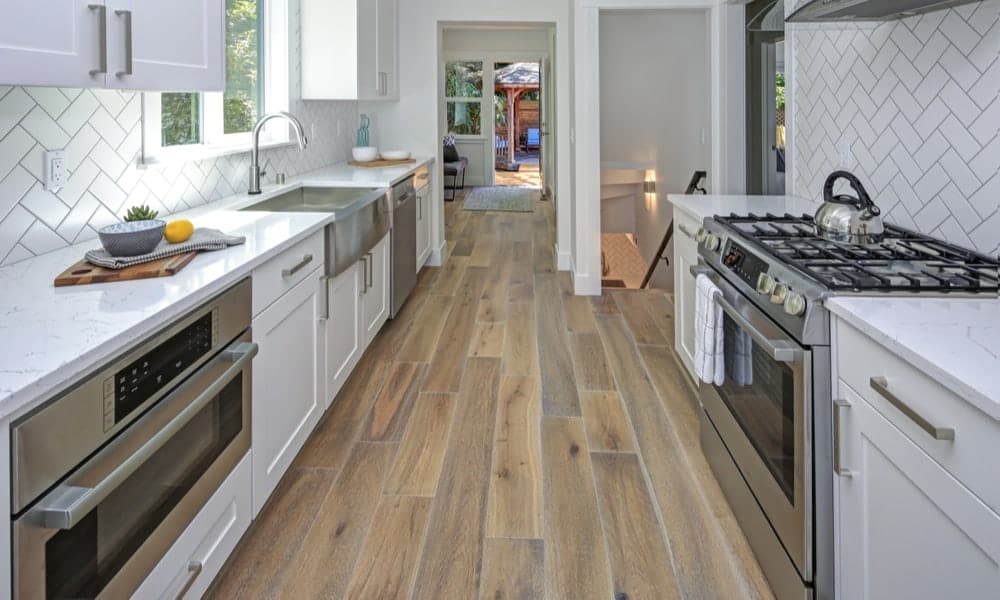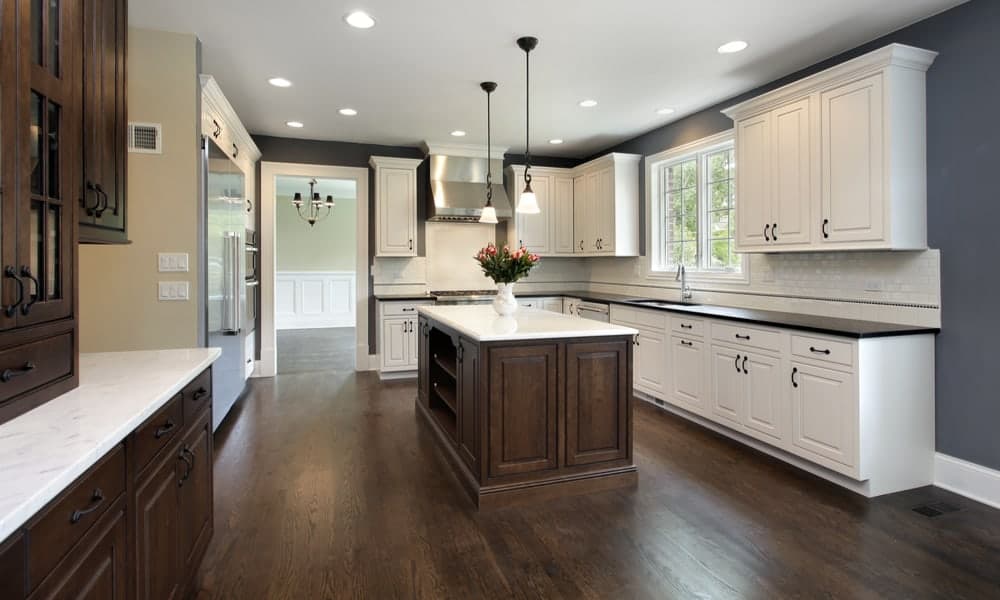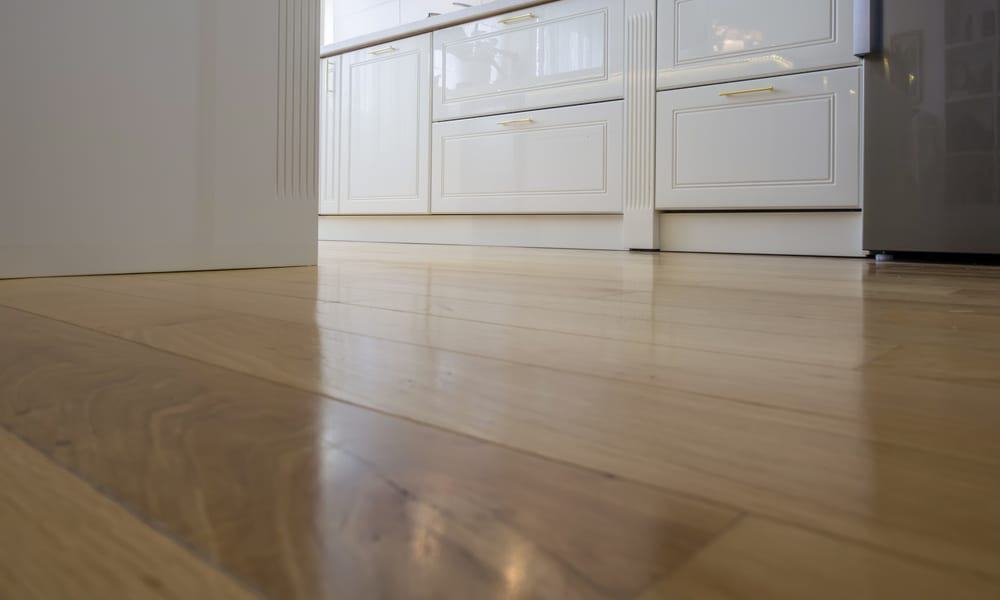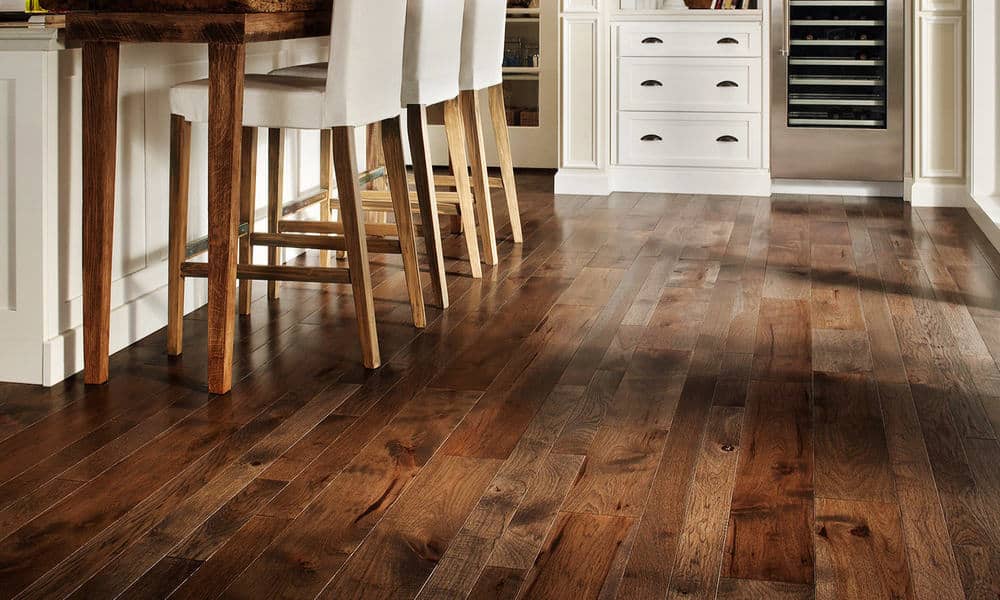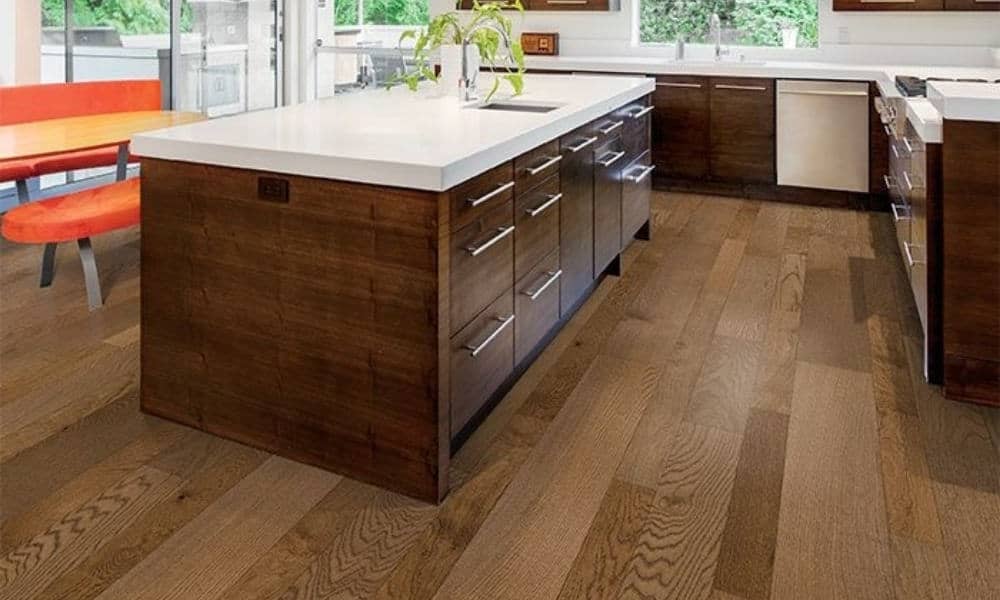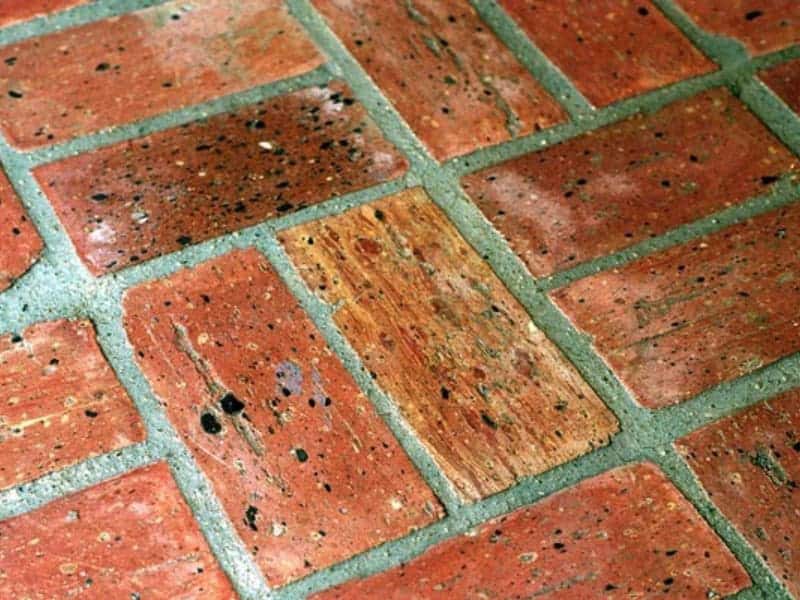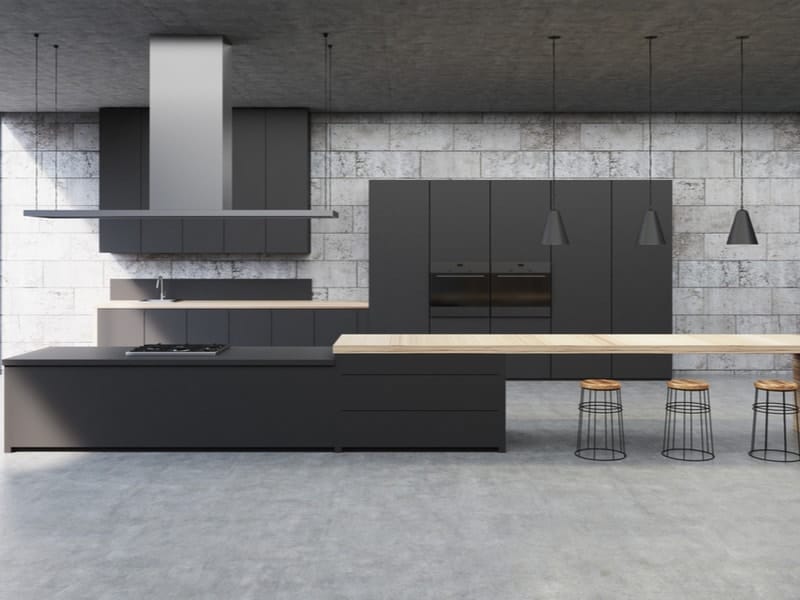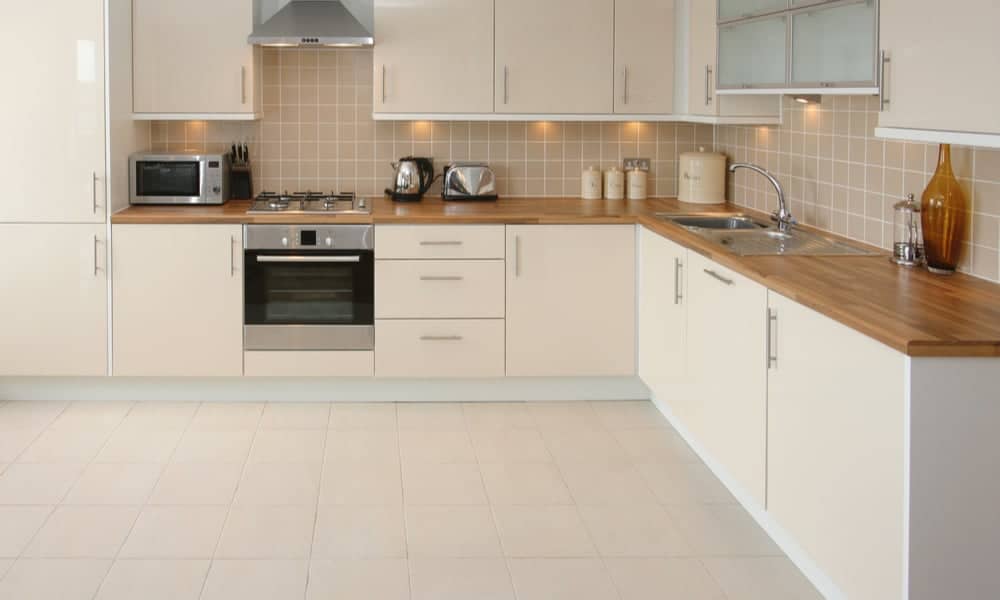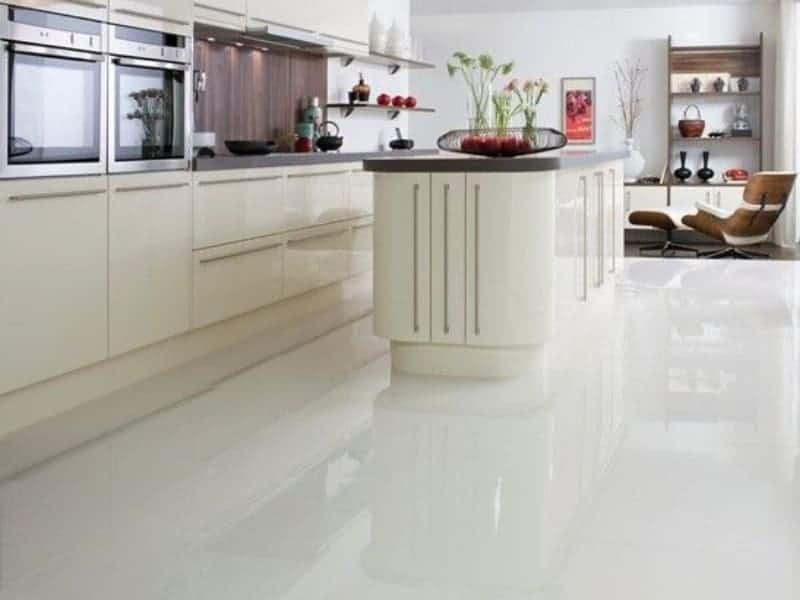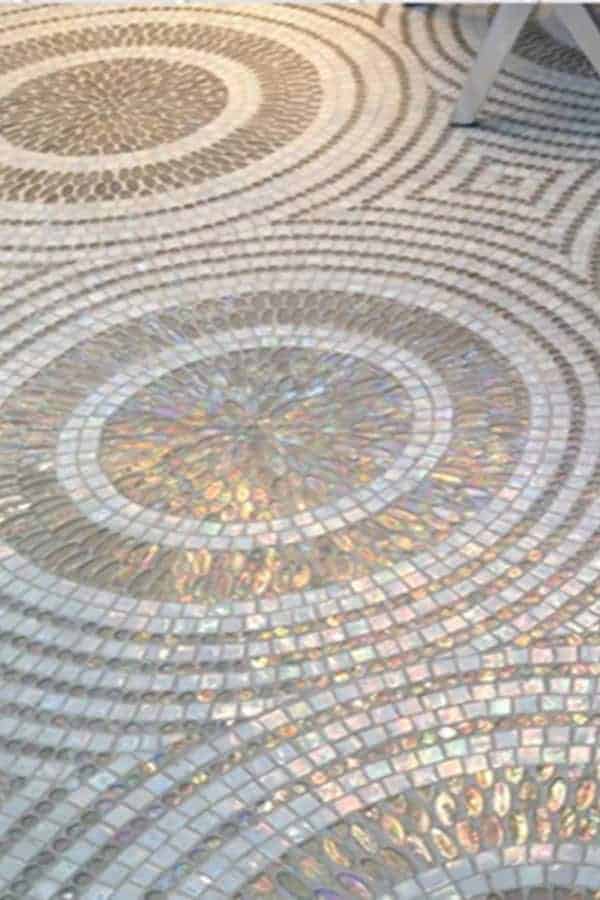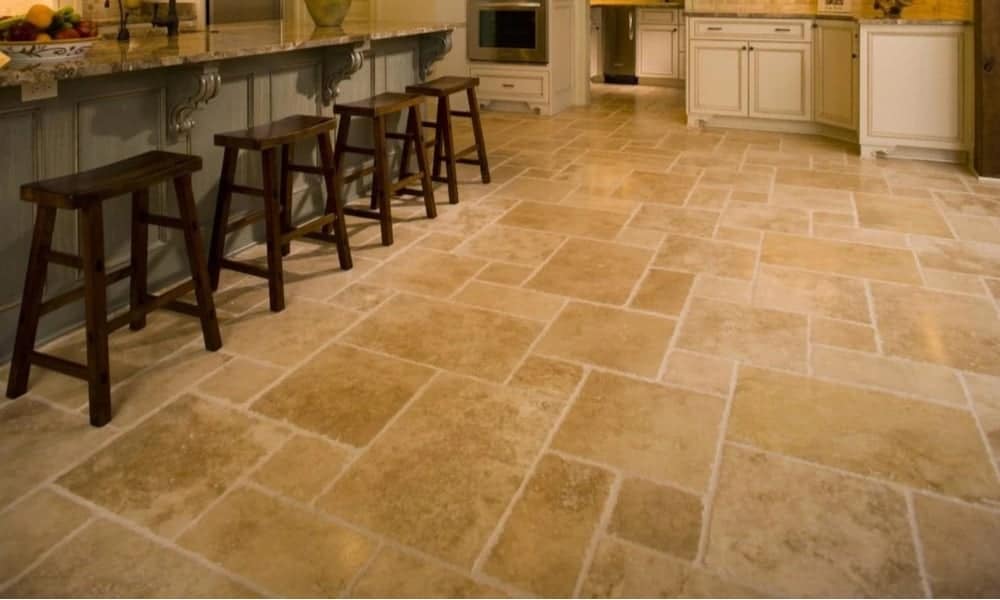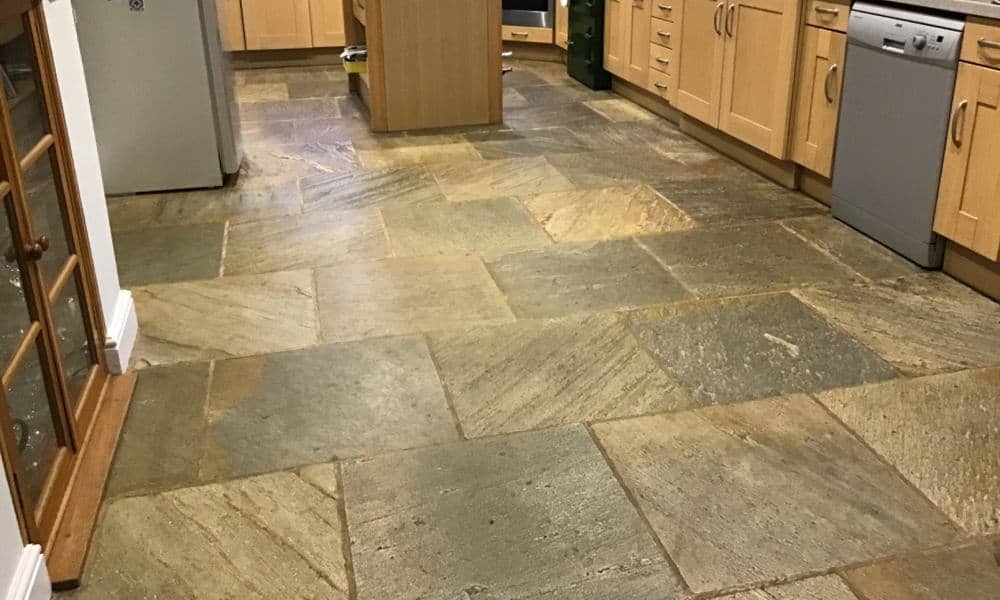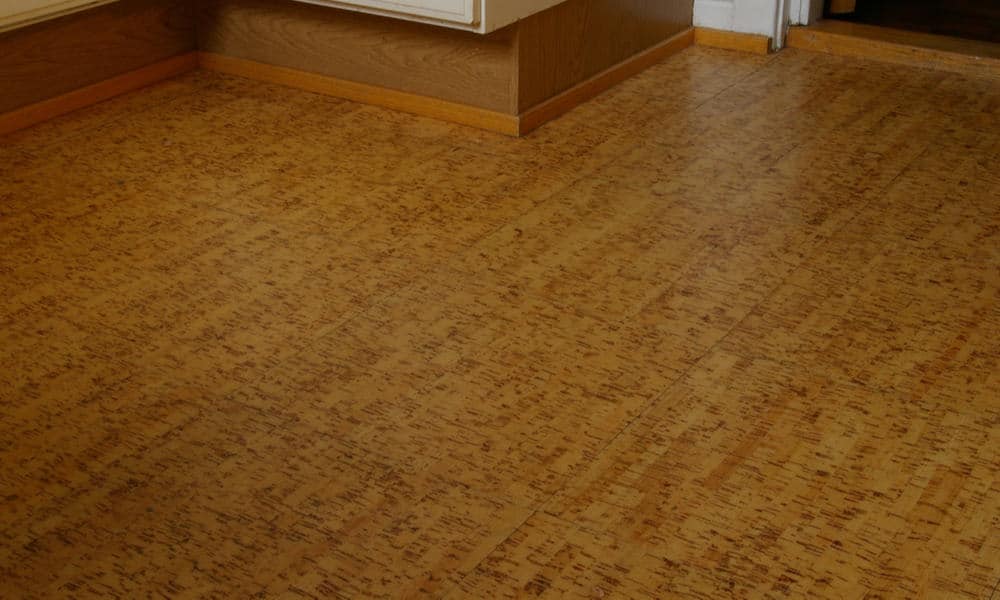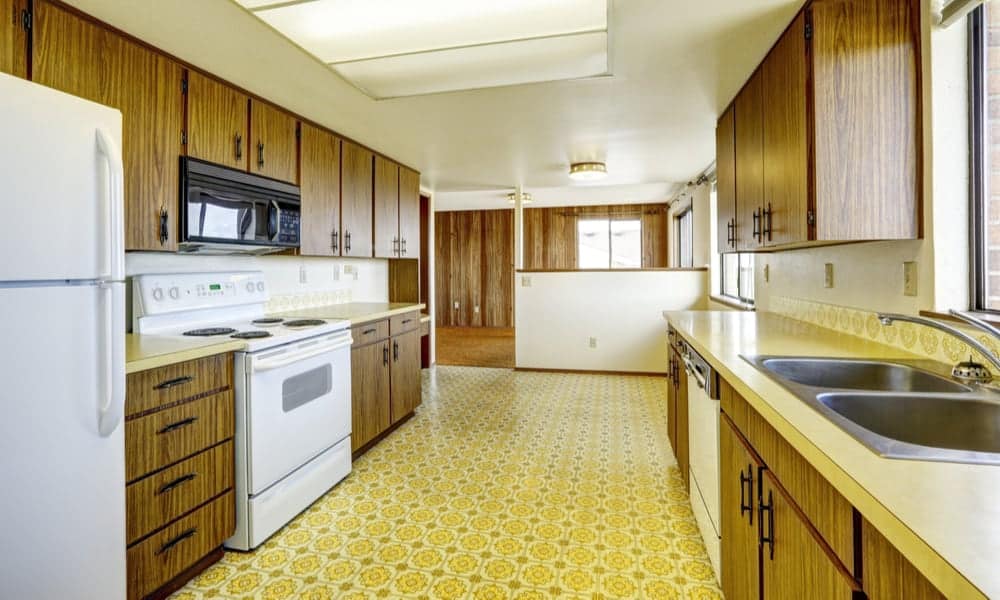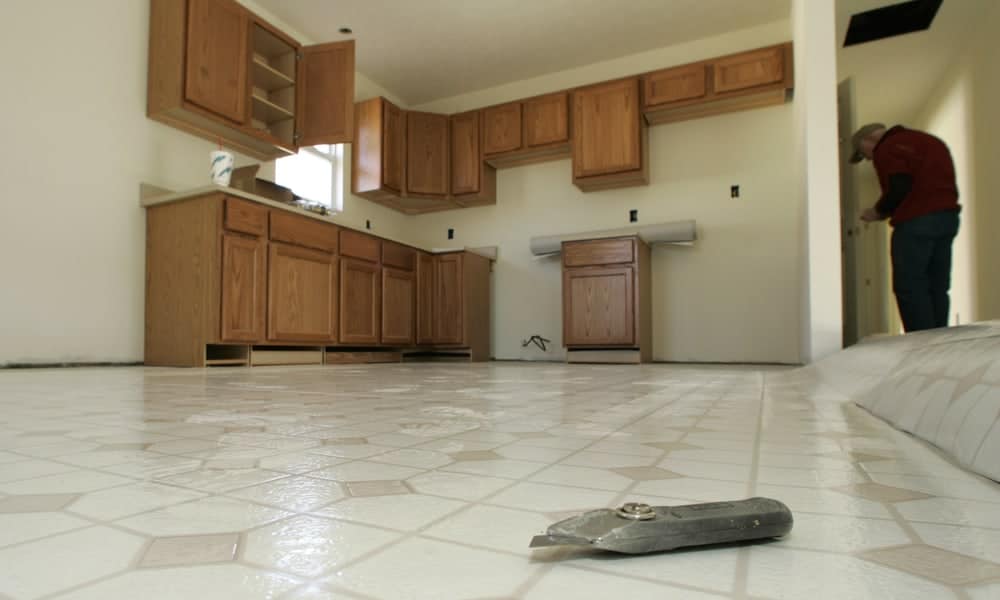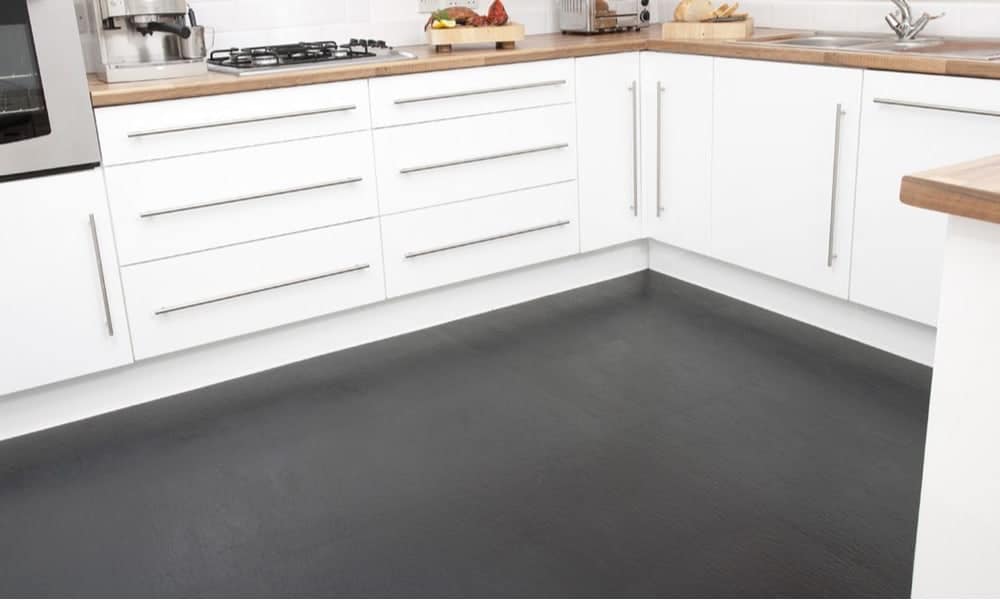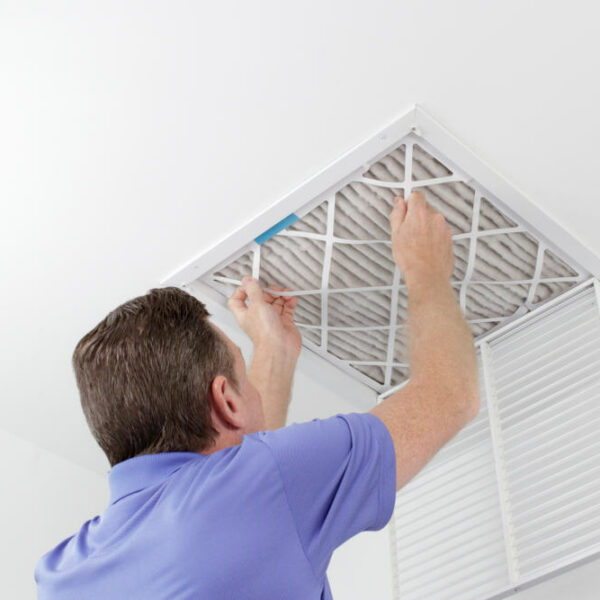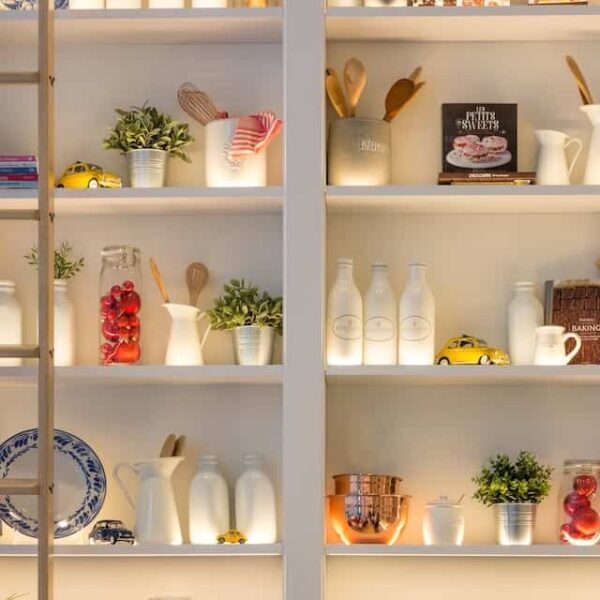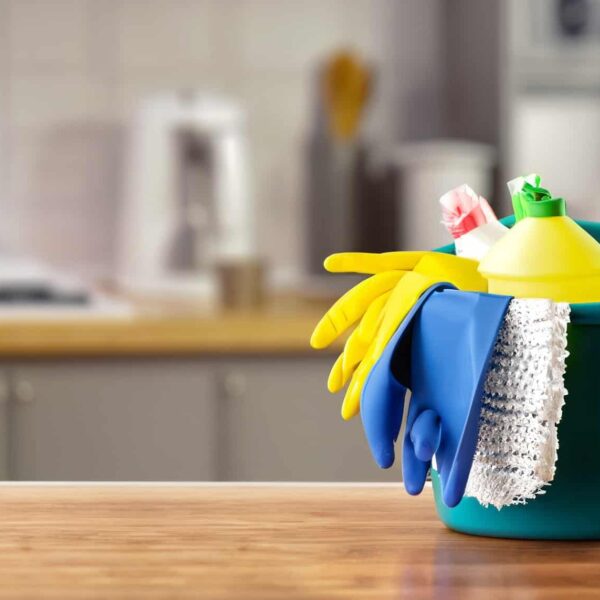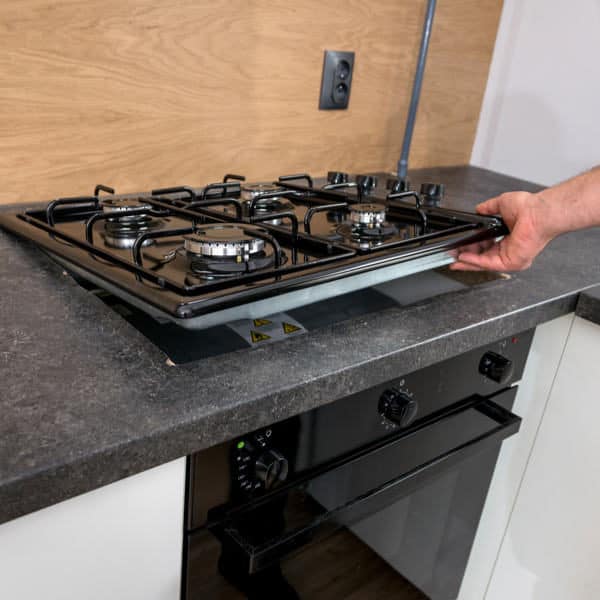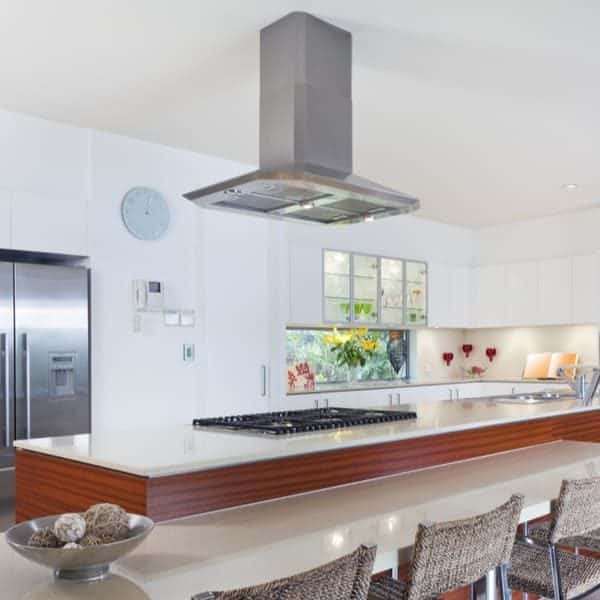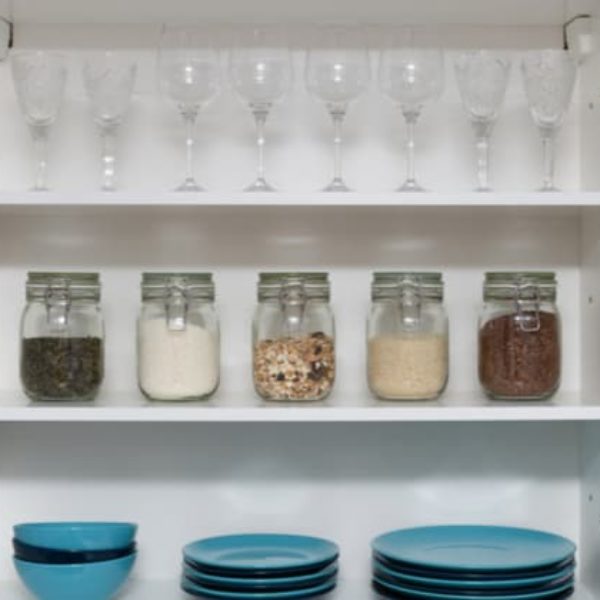When you decide to decorate your home, you usually try to make it beautiful, comfortable, and cozy. However, it shouldn’t be your priority when it comes to the kitchen floor. OK, it is essential to have lovely flooring material, but it is crucial to pay attention to practicality.
You need an easy-to-clean, functional, and durable kitchen flooring, which is stylish, elegant, and attractive at the same time. Plus, it should fit with your kitchen cabinets. One more thing! If you plan to install underfloor heating, you need to consider materials, which can withstand high temperatures.
What type of flooring is best for kitchens?
1. Wood kitchen flooring
Wood is a viable and convenient flooring material for your kitchen. It will add warmth and light sense of timelessness to any style you use. Nowadays, we usually choose hardwood for flooring since it is a durable and comfortable option requiring low-maintenance.
The most common types of wood you can choose for your kitchen floor are:
Real wood – It will warm up your kitchen, especially the white one. Properly treated, it will be resistant to moisture and scratches, and it will last long.
Scandi oak – It is a super cool solution for your home. The warm, light natural tones will work excellently with white cabinets, kitchen sink, and induction cooktop made of steel, for example. This option will transform your kitchen into a contemporary, fresh, and elegant place.
Excellent alternatives include:
Dark wood laminate – It is a budget-friendly alternative to the real wood floor, and can look authentic if you choose the right quality.
Faux wood floor tiles – These wood-effect porcelain tiles look like the real wooden parquet flooring. However, they require lower maintenance, which makes them more practical for a kitchen. Plus, these tiles are an excellent choice if you want to install underfloor heating.
Pros
- If you take care of your wooden floor adequately, it can last for decades
- It works with most decorating styles, including all options from traditional to modern
- You can choose between a few types of woods, such as walnut, oak, and cherry
- It requires low maintenance
Cons
- Laying requires professional help
- It is a costly solution, and you should calculate the cost of sub-flooring, as well
- Wood is noisy while walking across it
- It requires occasional refinishing
2. Parquet kitchen flooring
A delicate parquet in combination with elegant kitchen faucets and trendy countertops is an excellent option for your kitchen. Keep in mind that this natural material expands and contracts as a result of alternately rising and falling the level of temperature and moisture.
Pros
- Parquet made of oak, pitch pine, or tropical hardwood is an excellent choice for the kitchen
- You can combine it with a tiling area near the kitchen sink and garbage disposal
- If you fill the gaps adequately, you will prevent moisture from penetrating below your parquet
Cons
- You need to calculate an excellent water-resistant top-coat in the cost
- It can’t stand splashing with grease, bleach, and acid
- It requires using a proper wooden floor cleaner
3. Bamboo kitchen flooring
There are a few types of bamboo kitchen flooring with different properties, characteristics, and price you can use, including solid bamboo floor planks, strand-woven bamboo, and engineered bamboo. All of them can be an attractive option for residential kitchens.
Pros
- It is a strong, durable, and elegant material resistant to moisture
- Bamboo reflects light and keeps your kitchen bright and airy
- Since it is a renewable, bamboo is an eco-friendly option
Cons
- You can’t use bamboo in its natural state since it is not water-resistant
- If not maintained properly, you can face the occurrence of staining, scratches, and even mold
4. Engineered wood kitchen flooring
Engineered wood is an excellent water-resistant alternative to hardwood or laminate. It won’t expand and contract like natural wood flooring. Plus, anything thrown on the floor can’t damage this material.
Pros
- It can deal with all atmospheric challenges comfortably
- Since this type of flooring won’t swell or warp, it requires low maintenance
- It provides stability to the kitchen floor
- It is an environment-friendly option
Cons
- Depending on engineered manufacturers, the same product can be of different quality
- It is a costly option
5. Brick kitchen flooring
Bricks are maybe an unusual choice for flooring, but they can bring charm, elegance, and style in your kitchen. Expertly incorporated with contemporary elements, they will add a touch of rusticity to the modern kitchen.
Pros
- It is a durable option resistant to breakage and scratches
- Properly installed, this floor will last for decades
- It is an inexpensive material
- Brick won’t lose heat quickly, which makes them warm and comfortable
Cons
- There are no many color options of bricks available
- As an absorbent, they are not resistant to moisture and stains
6. Concrete kitchen flooring
If you prefer a tough, durable, and elegant kitchen floor, you should consider polished concrete. Plus, it is an ideal solution for an uneven floor surface. You just need to concrete over it!
Pros
- Since it helps in reflecting the light in a space, you will get a bright kitchen
- You can choose among numerous colors, patterns, sheens, and shading or to fashion them to resemble different types of stone
- It requires low maintenance
- It is an eco-friendly, long-lasting, and budget-friendly solution
Cons
- It requires sealing from time to time
- You will feel discomfort if you need to stand on concrete for an extended period since it is too hard and cold
- It is susceptible to moisture and slippery
7. Ceramic tiles Kitchen Flooring
Since tiles are durable, elegant, and cheap, they are probably the most common choice for the kitchen floor. Include your creativity and pick out the desired pattern, including chic chevrons, vintage chessboard, bold geometrics, hexagons, Victorian borders, mosaic, or multi-sized tiles. If you are a traditional type, you can choose neutral ceramics or glossy floor tiles, as well.
Pros
- Tiles are inexpensive, highly durable, and virtually indestructible
- The surface of tiles is easy to clean
- You can lay them by yourself
Cons
- Since ceramic is cold, it becomes uncomfortable for standing after a while
- Unless you seal grout lines carefully, it can be challenging to keep them clean
- Additional materials necessary for laying will increase the overall cost significantly
8. Porcelain tiles Kitchen Flooring
Porcelain is a harder, stronger, and purer type of ceramic tile. Its long-lasting, glazed surface is resistant to moisture. Nowadays, many designers use this elegant and stylish material for contemporary kitchen flooring. There are two types of these tiles. Unglazed porcelain is always in natural, earthy color, while glazed one comes with a glass-like coating in the desired color.
Pros
- Thanks to the flexibility of their design, you can use porcelain tiles resembling wood, marble, or granite
- It is a fireproof material resistant to liquid and stains, which requires low maintenance
- You can successfully repair this long-lasting flooring if needed
Cons
- It tends to be quite heavy, which makes the process of installation a laborious task
- Porcelain is expensive
- There are no adequate regulations that require fulfilling the specific characteristics of this product
9. Mosaic glass tile kitchen flooring
Even though most consumers use mosaic glass for countertops or walls, you can lay them on the kitchen floor, as well. These luminous tiles are highly sophisticated and timelessly elegant, but they are a costly option, as well.
Pros
- Although the standard dimensions are 0.5 x 0.5 inches (1.3 x 1.3 cm), you can find them in any size
- You have a standard rectangle, squares, triangle, and irregular shapes at your disposal
- It is an easy-to-clean, quite durable, and eco-friendly material
Cons
- You can’t use glass tiles if your kitchen is a high traffic area
- Installation is complicated, and you can’t do that job by yourself
- They are slippery, susceptible to scratches, and breakage
- It is an expensive solution
10. Travertine kitchen flooring
Travertine is a type of limestone and forms around deposits of mineral spring. You can find it in a variety of earth tone colors and usual tile form. If you install this all-natural stone properly, it will add a unique beauty to your kitchen.
Pros
- Well-polished travertine is a stylish, durable, and long-lasting material resistant to stains
- You can repair it effortlessly if necessary
Cons
- It has specific maintenance requirements, and you need to apply a stone-sealing agent periodically to prevent wearing
- Laying is quite complicated since travertine tiles are heavy
11. Slate kitchen flooring
The large-scale slabs of slate will provide a rustic vibe to your kitchen. It is a beautiful material full of natural variations and ridges, which will look better with age and add some depth to the entire space.
Pros
- It is a durable material resistant to scratches, cracks, and breaks
- If you damage your floor, it is possible to repair it
- You will enjoy its unique appearance
- Slate is an excellent choice for your kitchen if you want to install a floor heating system
Cons
- You can’t expect consistency of this material
- Since it is cold and hard, slate requires regular maintenance
- Laying these tiles is quite tricky, and you need to ask a professional for help
- It is a highly expensive option
12. Cork kitchen flooring
I like this warm and sustainable natural material coming in numerous patterns and colors. Since it is resilient and requires just sealing once in three to four years to become moisture-resistant, cork is highly convenient for lining the kitchen floor. You can choose between 12 x 12 inches (30.5 x 30.5 cm) tiles and 1 x 3 feet (30.5 x 91.5 cm) planks.
Pros
- You can quickly lay this comfortable, long-lasting material by yourself
- Since the planks of most types of cork have a layer of built-in underlayment, you don’t need to add the foam underlayment
- It is a quite inexpensive option
Cons
- You can damage it with high heels, or your pet can scratch it with claws
13. Linoleum kitchen flooring
The huge advantage of linoleum is availability in a wide range of colors and patterns. Unlike vinyl, it is an all-natural colored product made of a biodegradable and renewable mix of linseed oil and cork powder without harmful VOCs.
Pros
- It is easy-to-clean, eco-friendly material
- Since this type of flooring is resilient, it is comfortable for walking
- Always purchase linoleum with a protective coating, because it will make it unsusceptible to staining and resistant to moisture
Cons
- You can scratch it if you are not highly careful
- The new product can be slippery
14. Vinyl kitchen flooring
Vinyl flooring is a durable synthetic material with an imprinted pattern. Nowadays, you can find a wide range of colors and trendy designs. The cheapest models are 0.04 inches (1 mm) thick, but if you want a long-lasting product, you should pick out those thick at least 0.14 inches (3.5 mm).
Pros
- This budget-friendly and soft underfoot successfully imitates the look of wood, stone, leather, or tiles
- You can quickly lay it by yourself, even right over the subfloor
- It is an easy-to-clean option
Cons
- It is an artificial, non-degradable material
- It is quite easy to gouge and scratch this material, which makes it an inadequate choice if you have toddlers or pets in the house
15. Rubber kitchen flooring
Rubber flooring is an excellent option thanks to its durability, low maintenance needs, as well as the resistance to water, stains, and damage. Despite all the benefits, many homeowners avoid this material because of the limited design and color options.
Pros
- Since this material is resilient, it is comfortable, slip-resistant, and conforms to the shape of your foot
- DIY laying is not complicated
- It is an eco-friendly material
Cons
- Even though new rubber flooring has that unpleasant ‘car-tire’ smell at the beginning, it will fade over time. However, most homeowners prefer avoiding this inconvenience
- Acidic liquids, grease, and abrasive cleaning agents will discolor the surface of the rubber
- The distinctive rubber surface is unattractive
Summary
It is possible to get the desired kitchen flooring material at an affordable price if you are skillful and decide to do the job yourself. On the other hand, there are numerous exclusive options, which may cost you a fortune.
However, the price shouldn’t be the primary reason for picking out the particular material. It is crucial to find the one, which is durable, sturdy, and resistant to moisture, breakage, and scratches. If it is also beautiful, elegant, and stylish, you can be sure that you have won a winning combination!
